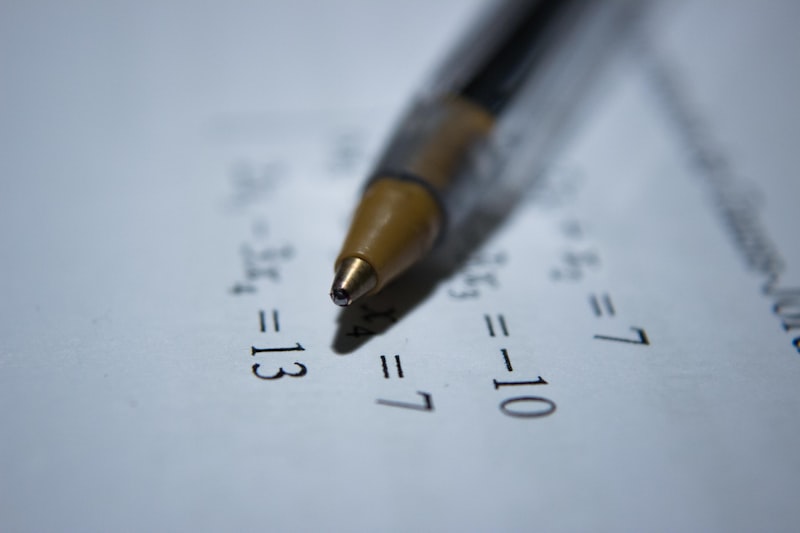Algebra serves as the foundation for advanced mathematics and numerous real-world applications. However, it's also where many students develop misconceptions that can hinder their progress. After analyzing thousands of student papers and tutoring sessions, we've identified the 10 most common algebra mistakes that learners consistently make.
This guide doesn't just highlight these errors—it provides actionable strategies, visual explanations, and memory techniques to help you recognize and avoid these pitfalls in your own work. Whether you're preparing for an exam or just want to strengthen your algebra skills, understanding these common mistakes will give you a significant advantage.
Misapplying the Distributive Property
The distributive property states that a(b + c) = ab + ac, but students often forget to distribute to all terms inside the parentheses or misapply this property when dealing with subtraction or division.
3(a - b) = 3a - b
(x + y)/2 = x/2 + y
3(a - b) = 3a - 3b
(x + y)/2 = x/2 + y/2
Arrow Technique: Physically draw arrows from the multiplier to each term inside the parentheses. This visual reminder ensures you distribute to every term.
Division Insight: Remember that division is multiplication by a reciprocal. So (a + b)/c = (1/c)(a + b) = a/c + b/c.

Visual representation of the distributive property using area models
Sign Errors When Moving Terms
When solving equations, students often forget to change signs when moving terms across the equals sign or make errors when dealing with negative coefficients.
5 - x = 2 → x = 5 - 2
-2x = 8 → x = 4
5 - x = 2 → x = 5 - 2 → -x = -3 → x = 3
-2x = 8 → x = -4
Equation Balance: Visualize the equation as a balance scale. Whatever you do to one side must be done to the other to maintain equilibrium.
Opposite Operations: When moving terms, perform the opposite operation: addition ↔ subtraction, multiplication ↔ division.
Negative Coefficients: When solving -kx = c, divide both sides by -k to get x = -c/k.
Incorrectly Combining Unlike Terms
Students frequently attempt to combine terms that have different variables or exponents, leading to incorrect simplifications.
x² + x³ = x⁵
4a + 5b - a = 3a + 5b - 1
x² + x³ (cannot combine)
4a + 5b - a = 3a + 5b
Variable Matching: Only terms with identical variable parts (same variables with same exponents) can be combined.
Color Coding: Use different colors to highlight like terms in an expression before combining.
Checklist Method: Create a checklist of variable parts to verify if terms are truly alike.

Example of properly combined like terms versus incorrect combinations
Improper Cancellation in Fractions
Students often cancel terms in numerators and denominators incorrectly, especially when dealing with sums or differences in rational expressions.
(x² + x)/(x + 1) = x²/1
(2x + 4)/2 = x + 4
(x² + x)/(x + 1) = x(x + 1)/(x + 1) = x
(2x + 4)/2 = (2x)/2 + 4/2 = x + 2
Factor First: Always factor numerators and denominators completely before attempting to cancel.
Multiplication Only: Cancellation is only valid for factors (terms being multiplied), not for terms being added or subtracted.
Distribute Division: When dealing with sums/differences in the numerator, consider distributing the division to each term.
Order of Operations (PEMDAS) Errors
Forgetting the proper order of operations leads to incorrect evaluation of expressions, especially when dealing with exponents, parentheses, and multiplication/division.
6 ÷ 2(1 + 2) = 1
2 × 3² = 36
6 ÷ 2(1 + 2) = 9
2 × 3² = 18
Memory Device: "Please Excuse My Dear Aunt Sally" (Parentheses, Exponents, Multiplication/Division, Addition/Subtraction).
Left-to-Right Rule: For operations with equal precedence (like multiplication and division), work from left to right.
Visual Grouping: Use parentheses to explicitly group operations when you're unsure of the order.

Visual representation of the order of operations hierarchy
Mastering Algebra Through Mindful Practice
Recognizing these common algebra mistakes is the first step toward eliminating them from your mathematical work. Each error represents a learning opportunity—a chance to deepen your understanding of algebraic concepts and operations.
The strategies presented here—visual techniques, memory aids, and systematic approaches—are designed to help you develop better mathematical habits. Remember that proficiency in algebra comes not just from solving problems, but from carefully analyzing your work to identify and understand mistakes.
As you continue your algebra journey, keep this guide handy as a reference. Over time, you'll find yourself automatically checking for these common pitfalls, leading to more accurate and confident problem-solving.